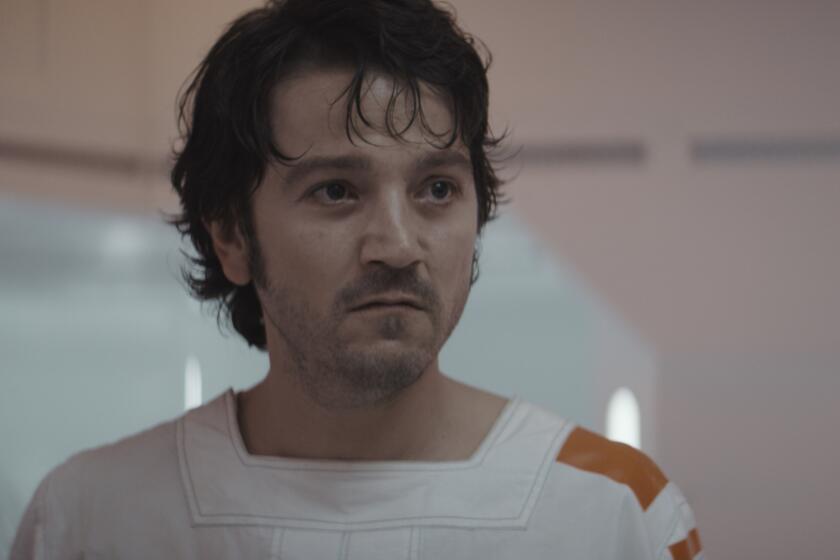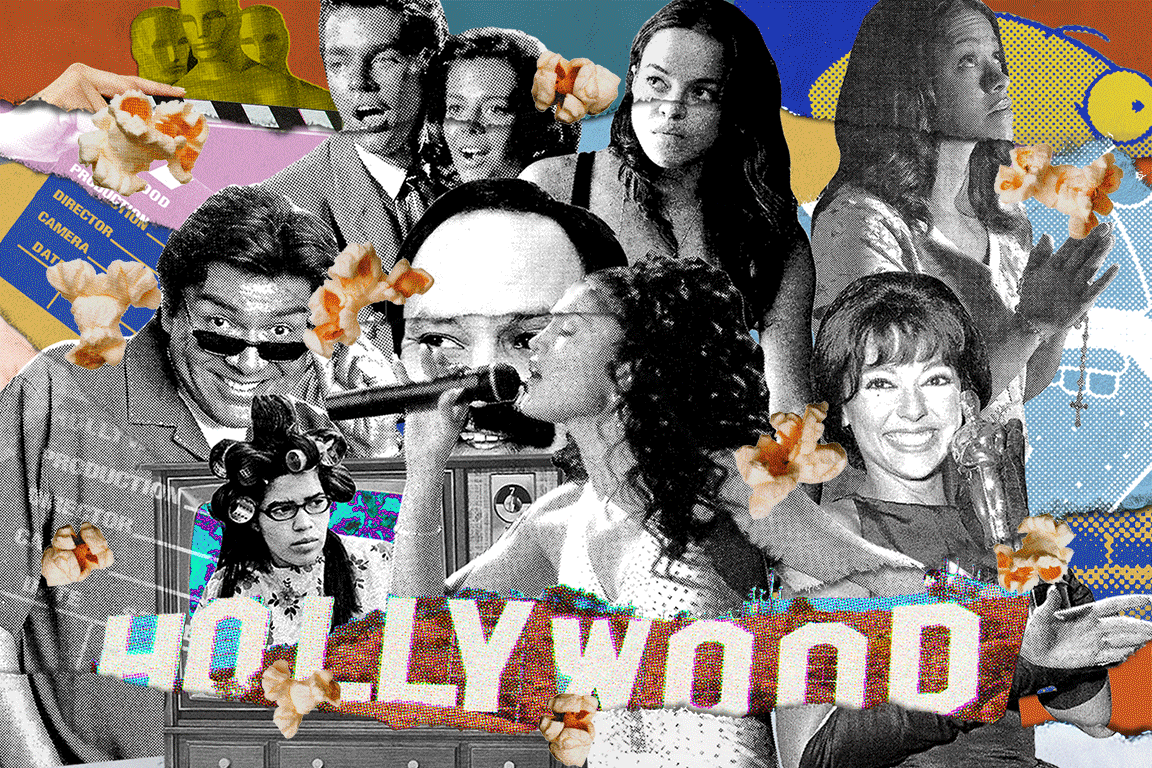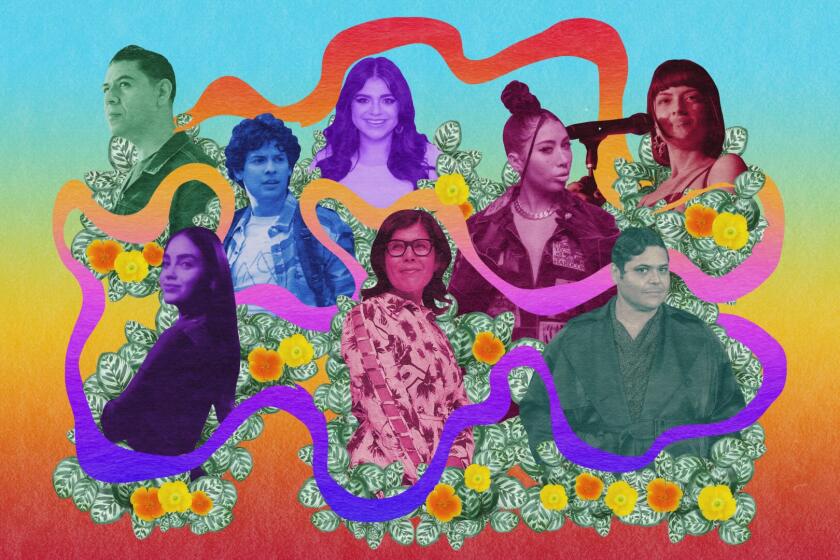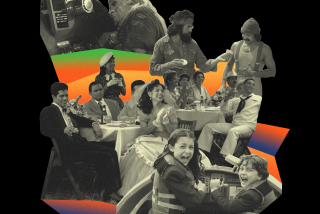Column: Latinos are starring in Hollywood’s fantasy flicks. Real-life tales, not so much
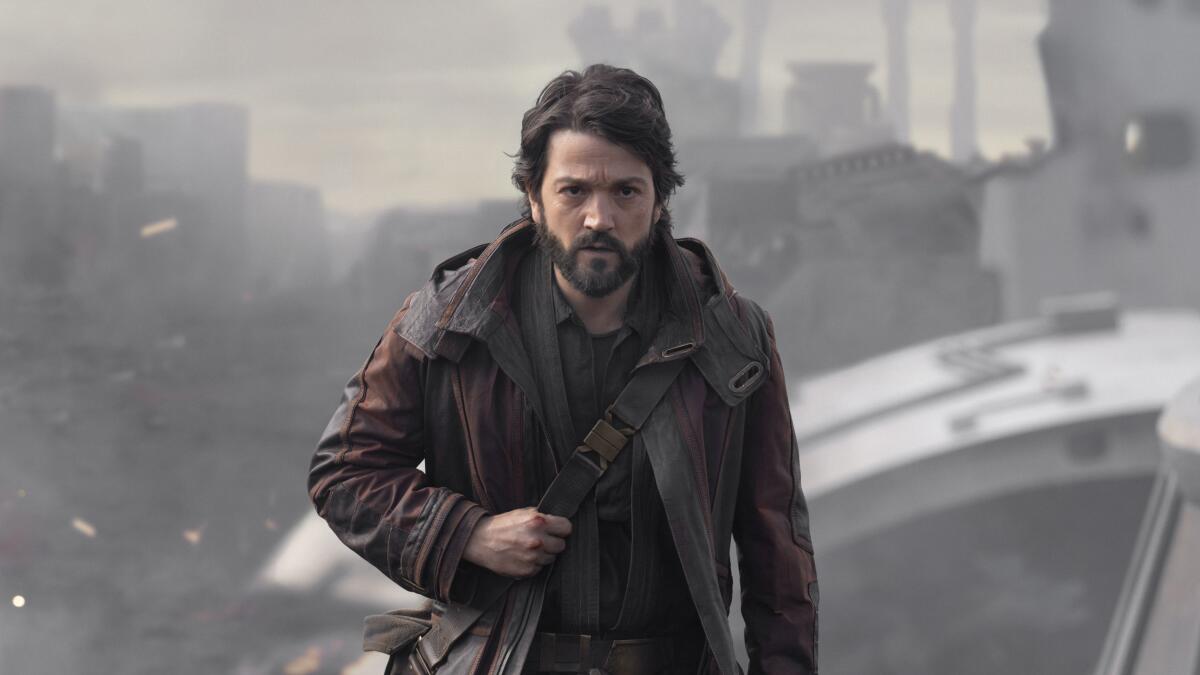
- Share via
My late mother didn’t have much of a chance to fully assimilate into American life. She moved to the United States from Mexico as a 9-year-old in the early 1960s and went to work almost immediately — first in garlic and strawberry fields, then as a packer in the old Hunt-Wesson cannery in Fullerton. Although she learned English, Mami spoke Spanish almost exclusively for most of her life.
That didn’t stop her from enjoying almost everything Hollywood had to offer.
Her tastes over the decades largely mirrored those of mainstream America. She enjoyed the screwball antics of Lucille Ball, Carol Burnett and Benny Hill. She swooned over Omar Sharif in “Doctor Zhivago” and Burt Reynolds in the “Smokey and the Bandit” films. She thought Steve Martin was a brilliant actor and loved game shows like “Family Feud” and “The Chase.”
Mami didn’t care for ultraviolence or on-screen nudity. But she saved a special kind of ire for a franchise I never expected her to hate: “Star Wars.”
How a prequel of a prequel, starring Diego Luna as future Rebellion spy Cassian Andor, became the jewel in the crown of ‘Star Wars’ television.
I could never convince her to sit down with me to watch the original trilogy on VHS. I humored her harrumphs when my best friend and I waited in line for hours to see the second batch in the late 1990s. Mami wouldn’t even buy my arguments that Star Wars was secretly Mexican because R2-D2 sounded like “Arturito” (“Little Arthur” in Spanish) and we knew a lot of guys nicknamed Chuy.
Her main issue with the intergalactic saga was that she found it improbable. For someone who loved Disney movies involving Flubber and talking lions, the idea of humans fighting it out in space was just silly. “¿Qué es eso?” she’d always remark — what’s that about?
It wasn’t until this Thanksgiving holiday, when I binge-watched the newest Star Wars television drama, “Andor” on Disney+, that I finally figured out what bothered Mami so much about the world of Jedi and Sith.
She grew up in an era where Mexican actors like Anthony Quinn and Ricardo Montalban were cinematic royalty, while ranchera icons like Antonio Aguilar and Lola Beltran regularly graced L.A. venues like the Hollywood Bowl and the Million Dollar Theater. Latinos weren’t all over the industry, but we were there.
The original “Star Wars” series, on the other hand, was whiter than chalk — you know your equity numbers are bad when the only brown-skinned characters are Wookies and Jabba the Hut.
Hollywood’s Latino culture gap: How new and veteran creators are working to reverse a brutal history
A Times report on the many-layered history of Latinos in Hollywood, the low representation figures and what TV and movie creators are doing about it.
Representation mattered to Mami, even if she never said it outright. That’s why I think she would’ve become a fan of “Andor.”
The series follows Cassian Andor, a former child refugee who turns into a revolutionary once the Galactic Empire overruns his adopted planet. He’s played by Diego Luna, who speaks with an unadulterated Mexican accent instead of the faux British one of many of the other protagonists.
Luna’s dreamy visage alone — resembling Paul McCartney in his “Let it Be” days — would’ve hooked Mami. The plot line — regular people rise up against tyranny — is the story of Latin America over the past 200 years. But she would’ve also watched “Andor” to support something historic: a run of Latinos in positive, prominent acting roles.
Chilean American Pedro Pascal plays a bounty hunter with a heart of gold in the other big “Star Wars” show, “The Mandalorian.” Mexican-born Tenoch Huerta just wowed audiences as the Mayan antagonist Namor in the Black Panther sequel, “Wakanda Forever.” Rosario Dawson is set to lead in her own “Star Wars” series next year.
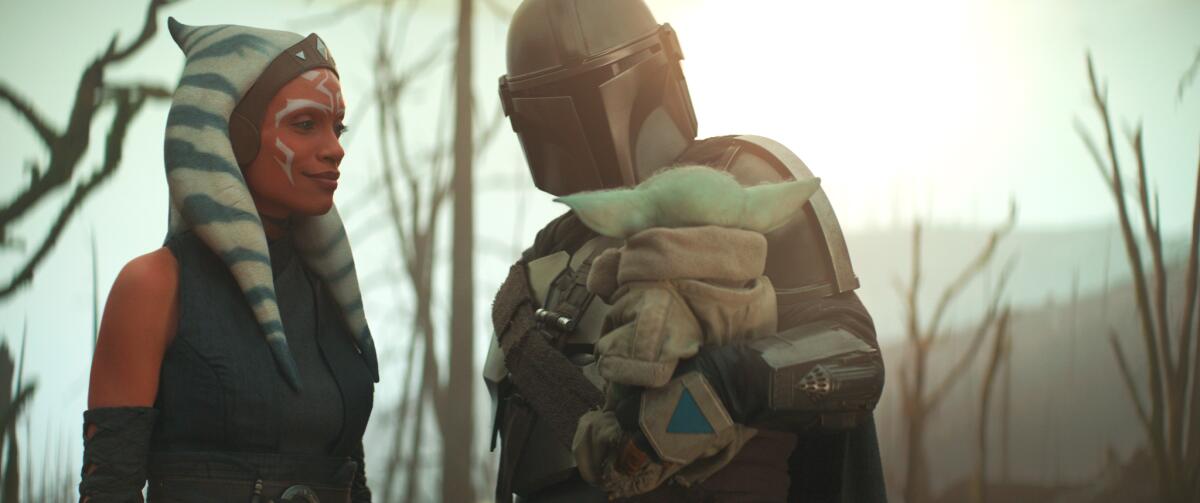
Latinos play crucial parts in films ranging from Ant-Man to Doctor Strange in the Marvel Cinematic Universe. Xolo Maridueña, the 21-year-old breakout star of “The Karate Kid” spinoff “Cobra Kai,” will play DC Comics character Blue Beetle in a film of the same name. The series “Wednesday,” which imagines the spooky Addams family as Mexicans, just broke streaming records for Netflix.
After more than a century of film and television depictions of Latinos as sexpots and criminals, seeing us play so many heroes is downright historic.
It’s also bittersweet for me, and not just because I can’t share these shows and movies with Mami, who died three and a half years ago from ovarian cancer. While “Andor” and “The Mandalorian” and their fantasy peers find fame, Latino-themed shows set in the real world keep getting canceled.
This year alone saw the end of “The Gordita Chronicles,” “Los Espookys,” “Gentefied,” “The Casagrandes” and “Promised Land.” Two years earlier, the reboots of “One Day at a Time” and “Vida” — dealing with the lives of Latinas in Echo Park and Boyle Heights, respectively — got the axe despite being critical favorites.
It’s as if Hollywood — which, remember, is based in a region that’s almost 50% Latino — can accept us in the worlds of Grogu and Thanos but not in everyday life.
Our inaugural LA Vanguardia class is an amazing array of Latino talent shaping the movies, TV, music, fine arts and literary scene of today — and tomorrow.
A Government Accountability Office report this year found that while Latinos are 19% of the U.S. population, they’re just 12% of the media, mostly occupying blue-collar roles. While Latinos are only 7% of writers and 11% of producers and editors, they are 19% of service workers and 12% of craftsmen.
A UCLA study, meanwhile, found that Latinos make up just 5.3% of all roles on streaming platforms, which executives have long hailed as a great equalizer for representation. “The more things change, the more they stay the same,” UCLA researchers caustically concluded.
Not even the threats of Rep. Joaquin Castro (D-San Antonio) to sic the federal government on Tinseltown via congressional hearings and investigations for possible labor violations have scared studios into doing much toward putting more Latinos in front of and behind the camera and giving them more than just a token chance.
Having Latinos in the world of mainstream make-believe is important. An entire generation of American kids grew up with Dora the Explorer and Handy Manny. Two films about Día de los Muertos, “Coco” and “The Book of Life,” have helped push the holiday into the mainstream and teach non-Mexicans a new way to remember the dead. Non-Latinos swaying to “We Don’t Talk About Bruno” in the Disney animated feature “Encanto” show that Latino culture is becoming American culture more than ever before.
That’s why networks and studios and streamers needs to showcase the tales of real-life Latinos, too. It’s not even that difficult. My childhood and teenage years in the 1980s and 1990s were a Golden Age of Latinos in film, with modest hits such as “Stand and Deliver,” “Born in East L.A.,” “Selena,” “My Family” and “Blood In Blood Out” that went on to become cult classics — in part because little else followed. The actors and actresses in those movies — Edward James Olmos, Cheech Marin, Benjamin Bratt and Jennifer Lopez, among the best known — were able to get cast in more than just “Latino” roles afterwards as a result.
The Joneses should know that the Arellanos are just like them. Films and TV shows need to depict Latinos with middle-class dreams and college crushes, who live in malaise but also paradise. Who are mean and goofy and all the other emotions that Hollywood allows seemingly everyone to have — except us.
More to Read
Sign up for Essential California
The most important California stories and recommendations in your inbox every morning.
You may occasionally receive promotional content from the Los Angeles Times.
